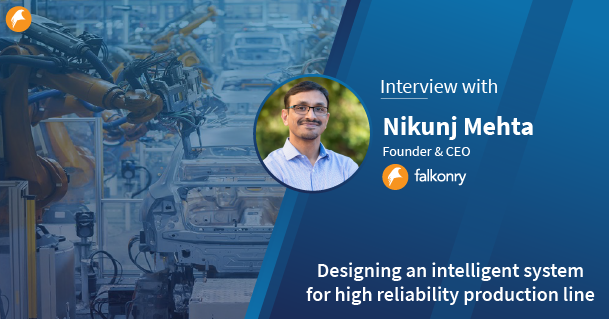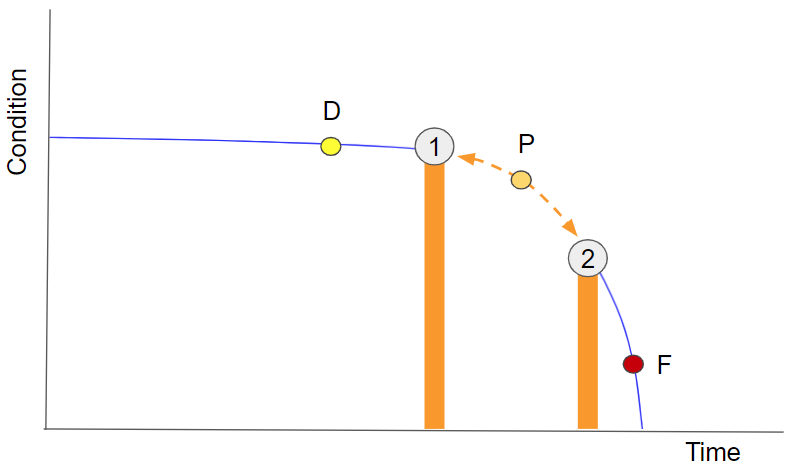How do patterns enable AI-based Operational Excellence
Key takeaways:
- Patterns expose hidden behaviors of a system and are the basis of any capable AI solution. The process of revealing these patterns from operational data has many facets which the solution must manage.
- A core tenet of Falkonry's approach is enabling operational excellence directly through operations teams. Therefore, any AI solution used for enhancing operational excellence must be geared towards operations experts instead of data or software experts.
- We discuss how Falkonry’s approach to patterns enables AI-based operational excellence.
Falkonry time series AI is aimed at enabling operations teams to find and identify the issues which are most effective in advancing operational excellence in their area of the plant. Patterns are key to AI-based Operational Excellence because they provide a powerful yet flexible way to identify problem behaviors using only operational (sensor and process parameter values) data (see “What is a pattern and why does it matter for AI-enabled Operational Excellence?” for more information). However, manually finding and understanding patterns in operational data is not feasible. A system is required which organizes and automates pattern discovery and that helps the operations expert interpret and act upon those patterns. Let’s look more closely at Falkonry’s approach to patterns:
- Overcoming data issues in finding patterns
- Discovering novel patterns
- Interpreting patterns
- Naming and dispositioning patterns
- Acting upon known patterns
Overcoming data issues in finding patterns
Operational data are not optimized for analysis. Two common issues are: differences in sampling rates across parameters and data gaps due to sensor reporting failures. Falkonry’s pattern discovery engine automatically deals with issues like these and enables a proactive, data-centric operations culture.
Falkonry adapts its pattern engine to any arbitrary source of data. It employs signal processing techniques that are well suited to extracting information from noisy, highly multivariate data sources. Internally, Falkonry represents each pattern mathematically and indexes a catalog of patterns so that any pattern can be searched in this catalog.
Over years of deploying Falkonry with customers, we looked at data from a range of sources, across a variety of use cases. This empirical validation is the first time it has been shown that a single approach to operational data is suitable for a broad set of applications. The same approach works in mining, oil and gas or defense. It works across rotating equipment, process monitoring or intelligence. This approach is a fully automated pattern-finding process, thereby saving the operational team from requiring external expertise to perform this task.
Discovering novel patterns
Discovering insights is the first step. Since it is very easy to get overwhelmed by the number of possible new patterns in a dataset, it is important to alert users only about interesting patterns, i.e. novel and unique behaviors where intervention may be called for. Our experience discovering interesting patterns has led to examples like
- precursors of part failure in CNC milling equipment,
- excursions in incoming material quality in ore milling operations, and
- “unknown unknowns” in signal intelligence (SIGINT) applications.
Through its ability to index patterns, Falkonry is able to discriminate among patterns and find those that are truly distinct from those that have been seen before. This enables the operational experts to spend more time focusing on patterns that truly deserve their attention because they have the contextual and situational awareness to attach these patterns to their knowledge and expertise.
Interpreting patterns
Capturing knowledge is the next step toward enhancing AI-based operational excellence. It is important to understand the causes of novel patterns in order to document knowledge against the pattern catalog and to identify recommended actions that improve operational performance. The success of an AI solution depends quite heavily on the pattern interpretation tools available to the operational expert. Operational experts need to effectively and efficiently understand the discovered novel pattern in order to enable the rest of Falkonry’s unique approach.
Falkonry has worked with numerous operational experts who review the patterns our engine discovers. Through this focused research we have found three important ingredients to be successful at interpreting patterns:
- Ranking parameters for their importance in the pattern
- Comparing the behavior of parameters across patterns
- Visualizing important parameter behavior during pattern
Falkonry’s pattern engine, designed for interpretability, has been tested by dozens of operational experts who have used it to perform root cause analysis. This integrated and validated explanatory, comparative and visualization support enables the operations expert to gain a deep understanding of the underlying behavior on their own.
Naming and dispositioning patterns
The second step is completed when an operational expert finishes review of the novel pattern and dispositions it. A name is chosen to represent the root cause of that pattern and is intended to evoke the best suited recommended action. For every novel pattern discovered by Falkonry, the operational expert assigns it a name, optionally provides it a description, and if this pattern should not be ignored, sets it up for alerting.
Once a pattern is named, the name is recorded in the catalog so that a later recurrence of the pattern can be immediately and automatically translated to that name. A pattern can be renamed if the expert’s understanding of root causes evolves over time. Names can be selected from known remedies or repair codes. Certain patterns are normal and do not require action; those patterns are not set up for alerting. Some patterns are warnings and precursors to adverse behaviors; these should be set up for alerting. It is possible to automate the predictions of adverse behaviors once a behavior has recurred a few times. Other patterns may not be easily dispositioned; these patterns should be held in abeyance until later adverse behaviors are seen.
In this way, when an operational expert dispositions a novel pattern, it immediately becomes a target of knowledge capture and simplifies future action.
Acting upon known patterns
The last step is to affect production by acting on alerts and captured knowledge. Since patterns reveal a range of use cases – from up-time to quality and from safety to yield – the exact action depends on the context. Typically, alerts are presented to operations team members (not just experts) and they mark alerts as being correct or not. This reinforcement feeds an improvement cycle inside the time series AI platform so that ineffective alerts are reduced.
In order for this process to scale as intended, a way of calling attention to important recurring patterns of operation, such as those indicating early part wear or quality degradation, is needed. To address this aspect of using patterns, Falkonry provides an alert dashboard which highlights named patterns as they occur. The dashboard also provides a timeline of alerts that delivers additional context to operational experts and actors. Another way to contextualize alerts is to see their recurrences and compare recurrences across patterns. For this purpose, a report summarizing alerts and their disposition during a selected period of operation helps plant managers to understand whether their plant is improving and whether the AI is contributing to that improvement.
We believe that our AI-based approach to improving operations resolves key challenges that operations teams will face while implementing their operational excellence strategy. By using patterns in a way specifically meant to enable operations experts, we have set them up to pursue operational excellence at scale.





